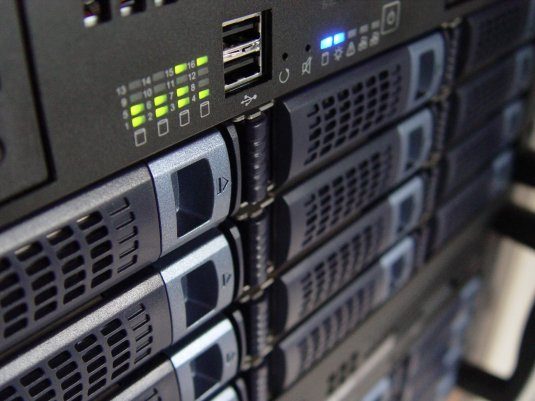The history of the server

Cross-Guard specialises in a variety of products for IT and server security, and products to increase energy efficiency of equipment within data centres. This article is dedicated to a topic that our data centre clients may be interested in, and already familiar with, the history of the server as we know it today. Technology is always being improved and, in a digital era, consumers always want instant connections and fast speeds for online activities. This puts immense pressure on data centre operators to meet expectations and ensure minimal downtime.
The first web server
The world’s first web server was invented in 1989 by Tim Berners-Lee and set up on a NeXT computer in 1990. It had a 2GB disk and a 256 MHz CPU (Roundy, 2020). In comparison, the modern servers are much more advanced, delivering exceptional performance.
Expansion of servers and the introduction of rack servers
1993 marked the year where CERN (one of the world’s largest scientific research centres) launched the World Wide Web into public domain. This point marked rapid server growth and, according to Roundy (2020), over 500 web servers existed by the end of 1993 worldwide, and by the end of 1994 this had shot up to over 10,000.
In order to squeeze more servers into tight spaces, server racks were introduced. Initially, these had issues with increasing server temperatures, and demanded specialist cooling systems, putting strain onto these systems. Now, we’ve advanced since that point, with the development of hot aisle containment and cold aisle containment, which reduces hot spots and strain on cooling systems, while delivering higher energy efficiency and ROI. In addition, Cross-Guard offers a more secure alternative to server racks – the Ventis server safe.
Advancements in servers: less space, less energy consumption
Over time, servers continued to advance. An improvement on traditional servers was the Moonshot server, developed by HP Labs in 2013. These particular servers were known to utilise less energy and space by running on low-energy microprocessors. They were ideal at the time for handling heavy data centre workloads while ensuring high performance.
Lower energy consumption with higher IT load in available space are key factors in modern data centres as the market continues to grow, especially since current circumstances mean more people are home working and require speed and performance. As we move forward, the focus will continue to be on making server hardware smaller without compromising on performance, focussing on virtualization to achieve this.
Get in touch for server security and energy efficiency solutions
If you require any security or hot/cold aisle solutions for your data centre, please do get in touch with our expert team. You can give us a call on +44 (0)20 8108 9328 or email sales@cross-guard.com.
SHARE
DOWNLOAD A COPY OF OUR BROCHURE

